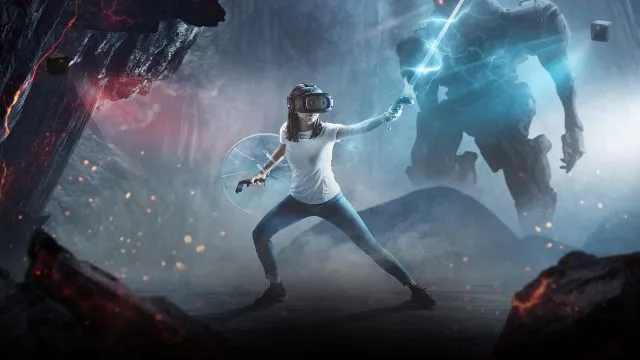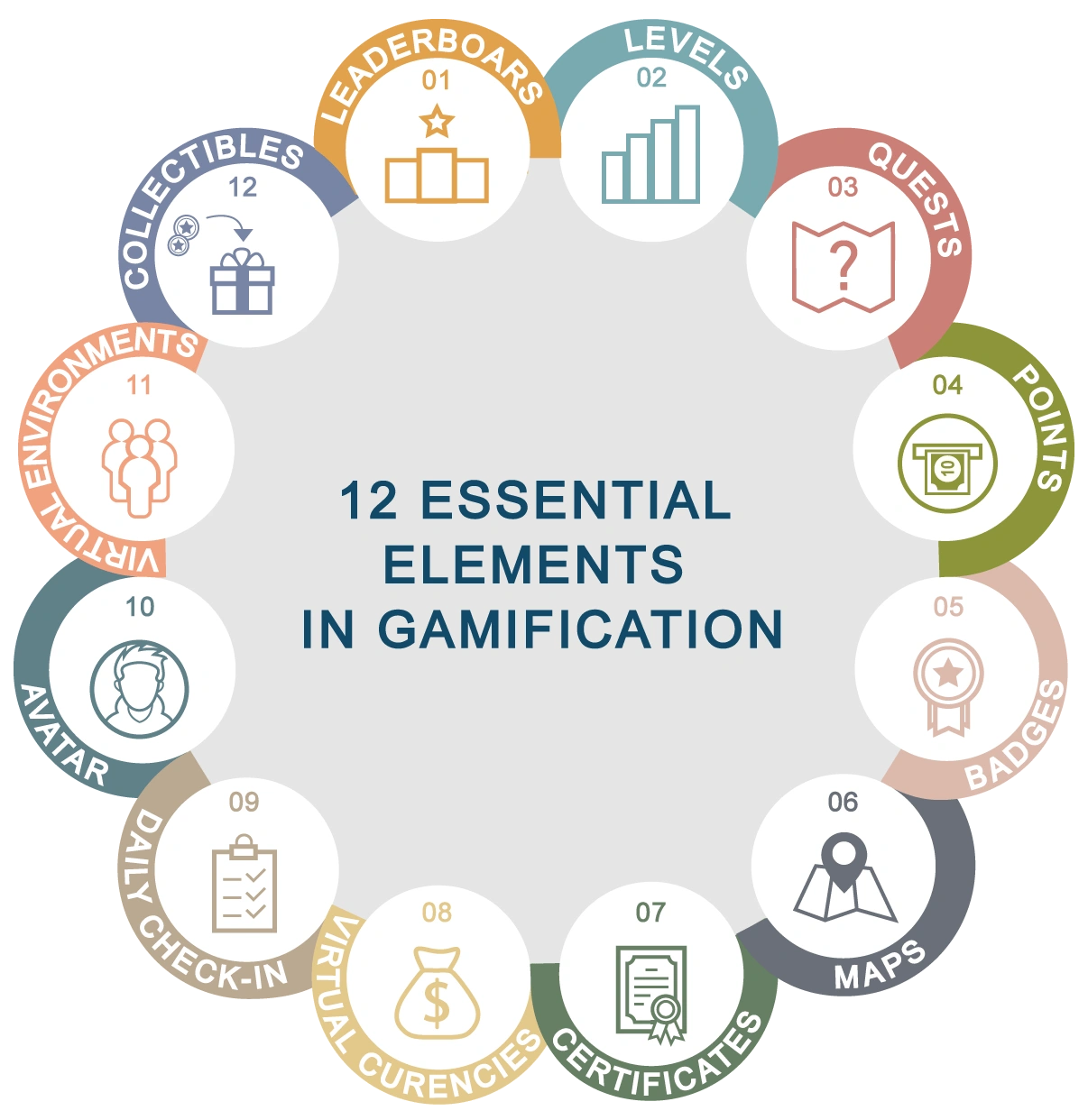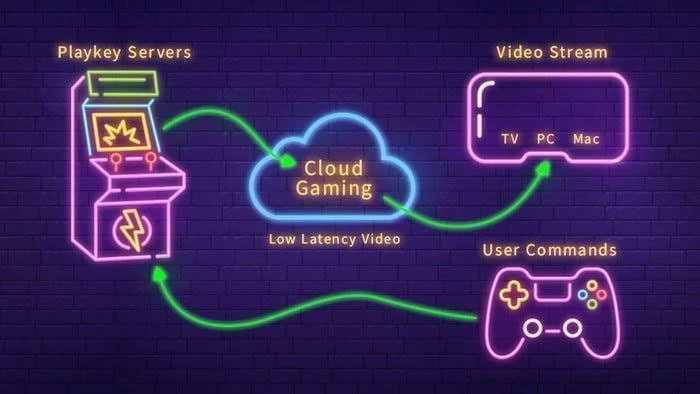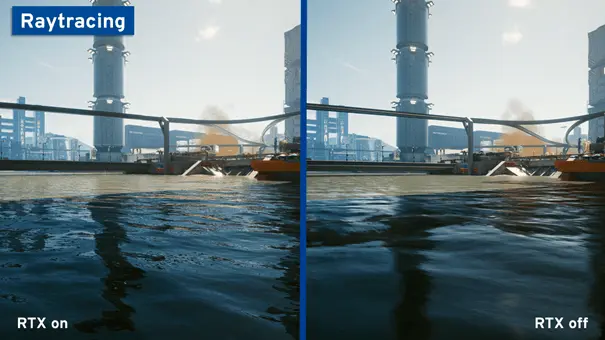If you’re a fan of video games, you know that the industry is constantly evolving and changing. With each passing year, new technologies emerge and new trends take hold, shaping the future of gaming. As we look ahead to rest of 2023 and beyond, there are several innovative game design trends that are poised to take the gaming world by storm. From cross-platform play and VR gaming to artificial intelligence and cloud gaming, these trends promise to revolutionize the way we play and experience games. Let’s take a closer look at the top 7 innovative game design trends to watch in 2023, including some exciting examples of gamification in action.
1. Cross-Platform Play


We are in an era of gaming in which the very existence of a game depends on how many players it will have daily. There’s nothing worse for a multiplayer game than not having enough players to get a session running quickly. So if you are making a multiplayer game, it’s important for it to support Cross-Platform.
Cross-platform play is a feature that allows players to play games with each other – in real-time – on multiple platforms, such as consoles, computers, and mobile devices. For example, players on Xbox, PlayStation, and PC can play the same game together, regardless of their platform. This feature enhances the gaming experience by allowing players to play with friends and family members who may not own the same device as them. It also prevents the game from having a low player count.
Although it’s a good idea to let the players turn off Cross-Platform if they want to. Console players and PC players don’t always mix well together.


2. VR Gaming


Virtual Reality (VR) technology has made significant progress in recent years, and it is becoming more accessible and widely used in the gaming industry. With VR, players can immerse themselves in a virtual world and interact with it in a more natural and intuitive way than traditional gaming experiences.
In VR gaming, players wear a headset that tracks their movements and displays a virtual environment in front of their eyes. The headset may also include other sensory inputs, such as hand controllers, to enhance immersion. This allows for a more interactive and immersive experience, where players can look around, reach out, and interact with the virtual world just as they would in the real world.
If you check out Steam, you’ll see that the number of VR games is increasing year by year. Even some older games are being rereleased with the addition of VR technology. The most notable example is Elder Scrolls V: Skyrim. So far, only one true original masterpiece has been released in this category: Half-Life: Alyx. But there are a lot of shorter innovative games that make this trend feel quite alive.
3. Artificial Intelligence


Ever since Chat-GPT was made public, AI has become the biggest trend in the world. New innovations in the field, like AI writing, AI Dialogue, AI Art, AI Programming, AI Dungeon Masters, etc., have all inspired game devs to wonder how they can use this technology in their own games.
Due to how recent the developments in the field have been, we still don’t have any games that use this technology -at this level – beyond the level of experimentation. But it’s highly likely that AI will become a very prominent part of game development in the coming years. It’s too soon to tell how it will affect the gaming landscape because, undoubtedly, there will be many failed experiments. But It’s definitely something you should keep a close eye on. It might as well be the next big game-changer.
4. Procedural Generation


Why design things when computers and algorithms can generate them infinitely?
OK, we’re not painting a good picture of procedural generation here, but it can be a pretty neat technique for certain genres and styles of game development. Games like No Man’s Sky, Spelunky and Minecraft have used this technique to great effect.
Procedural generation can save time and resources for game developers. Rather than manually creating every aspect of a game, they can use algorithms to generate unique and varied content with each play-through. This can also result in a more dynamic gaming experience for players, as the generated content can differ each time they play. The advancements in the field of procedural generation basically revived a whole new genre: Roguelike.
However, procedural generation can also be used as a technique to expand the vastness of open-world environments. With the combination of manual design and procedural generation, you can create open-world environments that look almost as great as a hand-crafted one but in a fraction of the time.
5. Gamification


Video games are getting really popular, so much so that people are trying to infuse them into many other things. Gamification is a trend to follow if you like the idea of games, but you’re too much of a production junkie to indulge in a real one!
Apps and websites using gamification elements have increased in the past few years. Although they don’t work on everybody and usually have a low retention rate, they can be a true blessing for those who work. If you’re wondering how gamification can be used, here are some examples:
Nike+
A fitness tracking app that uses gamification to encourage users to reach their fitness goals through rewards and friendly competition.
Duolingo
A language learning platform that uses gamification to make education more fun and engaging.
Foursquare
A location-based social networking app that uses gamification to incentivize users to explore new places and earn rewards.
Classcraft
An online educational platform that gamifies learning by turning it into an RPG/adventure game. Students can earn rewards, level up, and explore a virtual world while learning subjects like math, science, and history.
6. Cloud Gaming


The world has turned upside down. Back then, buying cutting-edge hardware was affordable, while a fast internet connection was a luxury. Now, it’s vice versa. Internet is so fast you can literally run games on it, while the price of hardware… let’s not get into that.
Cloud gaming is a new way of playing games which eliminates the need for a powerful computer or gaming console by streaming the games over the internet. The games are stored and run on remote servers, and players interact with them through their devices, such as computers, smartphones, or tablets. This allows players to easily access a wide range of high-quality games without the need to purchase expensive hardware.
Examples of cloud gaming services include Google Stadia (RIP), NVIDIA GeForce Now, and Amazon Luna. These services provide players with instant access to a library of games, which they can play on their devices with a stable internet connection.
7. Accessibility Options


In the past few years, there has been a growing recognition in the gaming industry of the importance of accessibility options. With the rise of the internet and the invention of better game development technology, an increasing number of people with disabilities have been able to play video games. Game developers and publishers have responded by making their games more accessible. This includes options such as adjustable font sizes, colourblind modes, audio descriptions, and remappable controls, as well as more sophisticated accessibility tools such as eye tracking and voice recognition software.
Apart from that, gaming organizations and advocacy groups have worked to raise awareness about the importance of accessibility in gaming and the need for more inclusive design. As a result, more and more games are being developed with accessibility in mind, and the gaming experience is becoming increasingly inclusive and enjoyable for everyone, regardless of their abilities.
Nowadays, if you publish a game with zero accessibility options in them, you might seem a bit insensitive. So you better keep an eye on what accessibility options are and how many of them are relevant to the game you’re making. Mark Brown has some great videos on the topic on his channel.
8. Real-Time Ray Tracing and Advanced Graphics


Video game industry is no stranger to the obsession with life-like graphics. Each generation, we have come closer to this ideal, sometimes at the cost of game design and gameplay, and it seems that Ray Tracing is one of the final steps towards reaching it. Ray Tracing, in simple words, is an attempt to recapture how light should react realistically in a virtual environment. The way it works is that it “traces” rays of light as they are shot off from the camera and bounce off different surfaces, materials and light sources and creates lifelike shadows and reflections. So thanks to ray tracing, lighting in video games will no longer look static.
The way ray tracing works is that each ray of light gathers data about the color, texture and lighting of each point in the scene and then ray tracing technology simulates the interaction of light with these surfaces and then determines the final pixel color of each point in the scene. The final result is an image that is as beautiful as it demanding.
At this point, ray tracing is so advanced that only high-end graphic cards can run it. It’s such a high and mighty piece of technology that Metro Exodus developers were forced to create a completely separate installation file for the game after they added the ray tracing update, because they simply couldn’t add it as a graphical option in the menu. If your graphic card doesn’t support ray tracing, don’t even bother downloading the ray tracing version. You can’t even run it with 1 FPS.
9. Sustainability and Eco-Friendly Game Development


For a long time, video game industry has been like the wild west. Employees were chewed in and spat out, publishers had a “go big or go home” attitude about everything and the word “eco-friendly” was something that your average game developer would roll his eyes at. But times are changing and disregard for the environment and the well-being of employees is much less tolerated than before, at least openly, especially considering how widely the cases of employee mistreatment in video game industry were reported in the past few years.
That’s why many game developers are trying to create a safer, more friendly and more inclusive work environment and implement certain policies that would reduce energy consumption during game development, like using renewable resources, responsibly sourcing materials for gaming hardware, and implementing environmentally friendly packaging, publishing games on digital platforms only and using ec0-friendly distribution methods.
Although skeptics might question the effectiveness of such methods, but the fact of the matter is that gaming industry is headed this way and if you want to be in this business, you might want to play along and not go back to the “wild west” aesthetic, especially if you’re going to be under spotlight.
10. Social and Community-Driven Gameplay


With each passing year, video game developers are realizing more deeply that some people do not experience games in a vacuum and are eager to share their experience with others. It’s like the Bertrand Russel quote: “There are two motives for reading a book; one, that you enjoy it; the other, that you can boast about it.” As video games are becoming more and more like books in terms of mental dedication, the need for social and community-driven gameplay increases.
Some games like Death Stranding and Elden Ring count on players leaving messages for each other. Some games, like Fall Guys, revolve around earning rewards and cosmetics that you can show off to others. Some games, like the dreaded Metaverse/NFT games, plan to turn gaming into a literal virtual society that you can earn money from and make friends in.
As internet and social media are becoming more ubiquitous, video games are taking advantage of them in more diverse ways, to a degree that “community-driven gameplay” is a thing now.
And that’s about it. While there are many more trends to watch for in 2023 (like Multi-player gaming, Mobile gaming and Esports), they have been around for a while, and you’re probably familiar with them. The trends introduced here are relatively new and are still in the process of being shaped and defined. Who knows, maybe you will turn out to be one of the people with a hand in that. So if you want to make your mark in the game industry by doing something creative, these trends are a good place to start.


